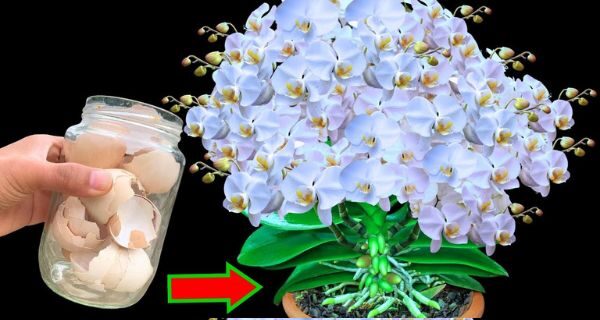
Sometimes orchids are viewed as extremely delicate flowers that require constant attention. This is partly true, but on the other hand the orchid is also a very strong and resilient plant. Sometimes you get so sick that you think there’s nothing left to do. It is precisely in these cases that you can save and restore a dying orchid without flowers and with dry leaves instead of throwing it away.
The orchid is a flower that resembles a model ready for a fashion show. Its beauty is readily kept at home to enhance a particular point of the house. However, haste and distraction might cause her some trouble. So let’s not be surprised if the orchid loses flowers, withers and dies due to these mistakes.
The plant only dies when the flowers have all fallen off and the leaves have become dry and the roots have been eaten away by rot. It’s not a pretty show, but there’s not much to do in this case.
On the other hand, if at least one green leaf remains from the plant, we do not throw it away because the plant is not dead yet. Maybe with a little attention you can recover.
Instead of throwing them away, here’s how to save and get back a dying orchid with no flowers and dry leaves
If there are only one or two leaves left on the plant, it is better to intervene immediately to save it. It is a completely normal fact that the orchid can lose all its flowers at some point in the year. It is not normal for the leaves to dry along with the flowers.
To recover an orchid plant that only has one or two leaves left, we proceed in this way. First, let’s free it from the pot by removing all the soil. Now let’s look at the aerial roots, which should be dead, but not all, whether there is still a green leaf.
Using disinfected scissors, we cut off the remains of the dead roots and dry parts, leaving the remains of those that are still alive. After this cleaning, we now prepare the new location of the system.
We take a transparent glass jar into which we pour 4 parts of water and 1 part of hydrogen peroxide. The latter serves to ensure an environment without threats to the plant but also to accelerate root formation. Water should only cover the roots without touching the leaves, otherwise they will rot.
So we leave the seedling in water for about 40 days. So we will see that the roots have recovered and perhaps new ones have been born. The leaves are also in full shape.
Repotting the orchid
At this point you need to put the orchid in the pot. You can take a new pot and new soil. Place soil on the ground and then place the seedling inside, bringing the soil level below the leaves. Watering will occur and slowly over the months the orchid will resume its life and beauty.
